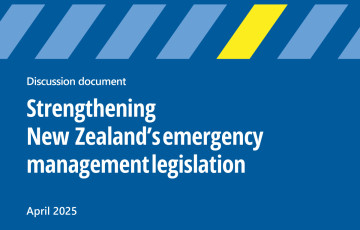Managing the risks of tsunami in New Zealand – Summary of Key Measures
The Earthquake Commission has commissioned research that looks at the tsunami risks facing New Zealand.
The Ministry of Civil Defence & Emergency Management coordinates the Tsunami Risk Management Programme, which considers a comprehensive range of risk reduction measures, and is overseen by a collaborative working group involving local and central government, science agencies, and private sector organisations.
The programme has either considered previously, or is working on the options contained in the EQC research. The research will be fed into the programme’s ongoing work programme.
Summary of measures to reduce tsunami risks to New Zealand
The following activities or projects are being worked on:
-
Evacuation modelling and mapping
-
Inundation mapping
-
CDEM Group support and guidance
-
Building and infrastructure
-
Vertical evaluation
-
Land-use planning
-
Social science research and reviews
-
Support of local/regional tsunami mitigation groups
-
Education, communication and exercises
A more detailed summary of the options contained in the EQC research and current practice is available by clicking here.
New Zealand’s entire coastline is at risk of tsunami. New Zealanders need to get ready, to get ‘thru’ in case of a tsunami. Tips for how to do this are available by clicking here.
People in these areas should follow this advice:
1. Stay out of the water (sea, rivers and estuaries, including boating activities)
2. Stay off beaches and shore areas
3. Do not go sightseeing
4. Share this information with family, neighbours and friends
5. Listen to the radio and/or TV for updates
6. Follow instructions of local civil defence authorities.
Published: Sep 3, 2015, 12:26 PM



